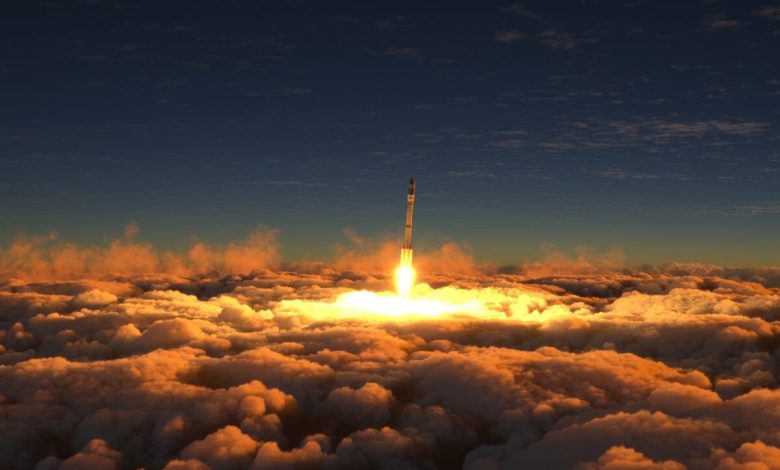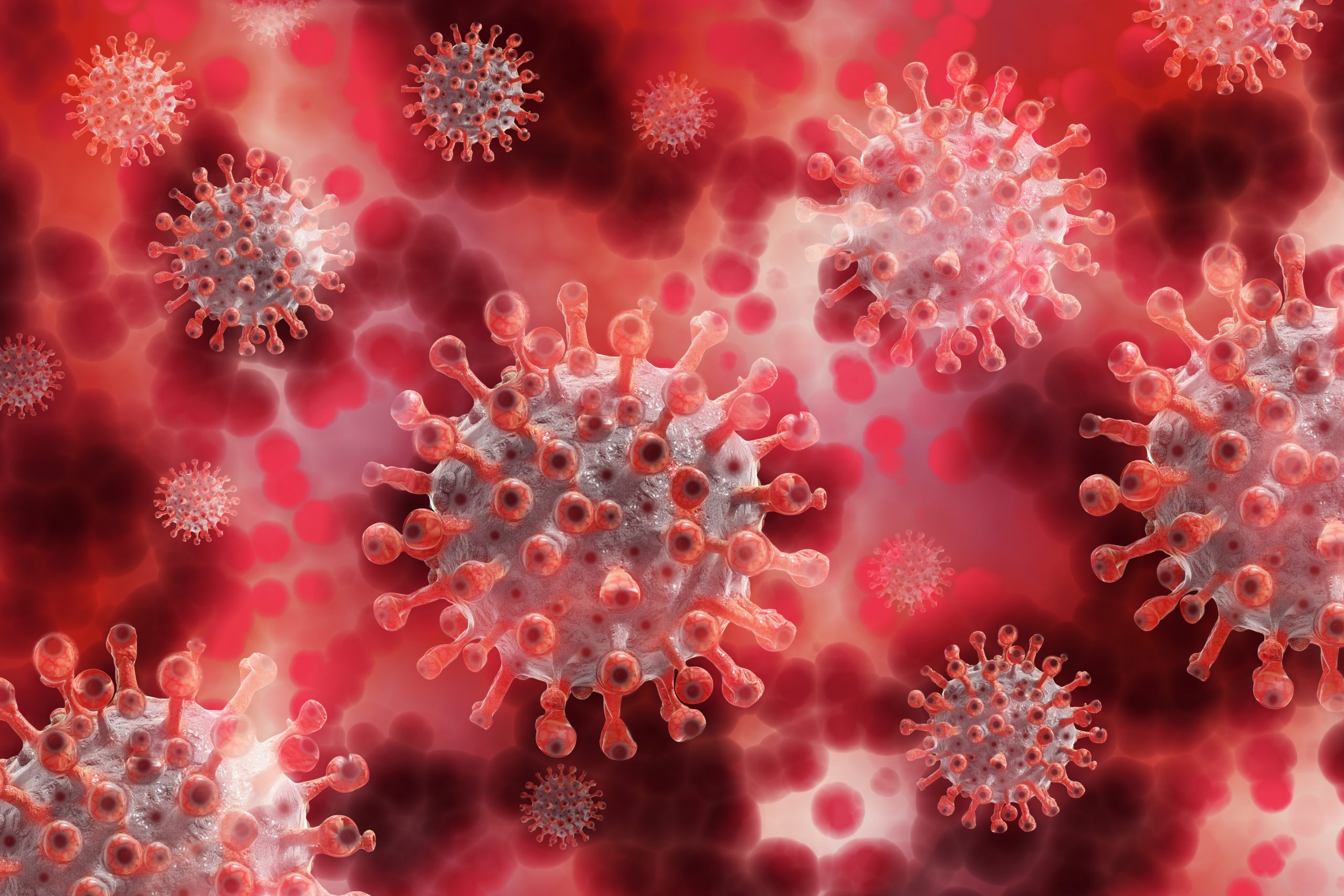
Lead Image: A Rocket flies through the clouds on sunset 3d illustration. Alexyz3d/iStock
The last few years of the pandemic have reminded us that humanity is far from invincible. We may be the most powerful beings on Earth, but just like every civilization in the past, we also have our limitations and weaknesses. Over the course of the last hundred years, industrialization, population growth, and technological development have changed the nature of human life almost beyond recognition.
Many of these changes have been positive and have made us stronger as a species — thanks to medical advancements, people are healthier and living longer than ever before; thanks to agricultural and industrial advancements, poverty levels and global hunger are significantly reduced.
However, these changes have also caused serious and lasting damage to Earth’s ecosystems and left us open, as a species, to a number of potentially destructive events.
Unfortunately, novel diseases like coronavirus are just one of the many things that currently threaten human lives on a global scale. Scientists have raised concerns that, in the coming years, forest fires, droughts, pollution, global warming, microbial mutations, or the rise of harmful artificial intelligence could endanger billions of lives.
Here’s an overview of what’s just hype and what the actual threats to human existence are in 2022.
Economic collapse in China
China is an economic titan; however, its foundation is wobbly, and many events have transpired over recent years that put both lives and the global economy at risk. Due to the interconnected nature of our systems and infrastructure, when such a major player has economic woes, virtually no country is left untouched. As a result, the recent financial trembles in China have caused many economists to have great concern.

Case in point, the real-estate sector accounts for a whopping 29 percent of the country’s total GDP. That is a huge number, and, unfortunately, the Chinese real estate market grabbed an enormous amount of attention this last year, due to the 300 billion dollars Evergrande debt crisis. This crisis led to firesales and selloffs, causing stocks to drop dramatically in China.
And Evergrande isn’t the only enormous problem in the housing market in China.
About 20 percent of the total urban housing properties — around 65 million properties — in China are vacant. This 20 percent includes large sections of major cities like Tianducheng, Thames Town, and Binhai. These “ghost cities” have well-connected roads, infrastructure, skyscrapers, and a variety of appealing public spaces, but they are extremely underpopulated and have vast areas that are without residents.
In 2022, these early trembles could lead to dramatic social unrest in China and market collapses that ripple around the world.
More COVID-19 variants
The first item on this list is, perhaps, the most obvious. As we write, the Omicron strain of the COVID-19 is responsible for 73 percent of the new COVID cases in the U.S.. The strain is thought to have already surpassed the Delta variant in countries like the UK and South Africa, and it is now considered the fastest spreading COVID-19 variant in the world. Scientists predict that COVID-19 is unlikely to disappear. In fact, in the coming years, we are likely to see more of its variants, although their severity may lessen over time.

Its impact on the human population depends on how the virus mutates further. In the future, either it will become more like a “normal” disease such as the flu or it will give rise to more deadly variants. And it could go either way. Adam Kucharski, professor of epidemiology at London School of Hygiene and Tropical Medicine told Nature, “the easiest way for the virus to cause new epidemics is to evade immunity over time. That’s similar to what we see with the seasonal coronaviruses.”
The World Health Organization estimates that, in its first two years, Covid-19 has caused more than 5.4 million deaths globally, and this is likely to be an underestimate. It is possible that the actual number of deaths could be much higher. For now, vaccinations and regular booster shots appear to be effective against severe illness and death, and new vaccines and treatments are in the works.
However, health experts are not sure how long COVID will remain a deadly infection.
Climate change
In August 2021, a wildfire in Evia, Greece burnt down 50,910 hectares of lush green forest. The same year, a series of floods wreaked havoc across Europe and caused damages totaling more than 11.8 billion dollars. Hundreds of individuals lost their lives (196 deaths were reported in Germany alone) and thousands of families were displaced during the 2021 European floods.
Meanwhile, the National Oceanic and Atmospheric Administration (NOAA) reported that the summer season of 2021 was the driest and hottest for contiguous states in the U.S. in records, dating back 126 years. During the peak time, California was severely affected and faced drought-like conditions in almost 88 percent of its total land area.

Temperatures across vast swaths of the US and Canada swelled to more than 120ºF (48.8°C). Hundreds perished from the extreme heat.
Forest fires, floods, droughts, increasing temperatures, the melting polar ice, hurricanes, rising sea levels…it’s all linked to human-induced climate change. The large amounts of CO2 and other greenhouse gases emitted from human activities cause drastic changes to Earth’s biosphere. Research has shown that anthropogenic actions are accelerating and are leading to climate change.
The impact of climate change on humanity can be understood from the following facts:
- The WHO claims that climate change alone already costs around 150,000 lives each year, due to the various hazards that result from climate change.
- A report suggests that, by 2030, rising sea levels will drown many coastal cities, including Venice, Amsterdam, and New Orleans.
- An estimate indicates that, if carbon emissions are not brought down, by 2050, about 800 million people living in 570 cities across the world will be severely affected due to the rising sea level.
Human-induced warming reached approximately 33°F (likely between 0.8°C and 1.2°C) above pre-industrial levels in 2017. This may seem small, but it is has been enough to drastically affect weather patterns, water availability, and agricultural production in many regions. Climate experts have predicted that 2022 would also turn out to be a hot year, which suggests that the human population in many areas might face more serious outcomes of climate change in the coming year as well.
No, we aren’t all going to perish next year. But the sad fact is that many people will, and many people already have.
Harmful AI
Elon Musk is known for his warnings about AI. As he stated in a recent documentary, “At least when there is an evil dictator, that human is going to die, but for AI there will be no death. It would live forever and then you would have an immortal dictator from which we could never escape.”
The possibility of an “evil AI” has been explored as a plot device in movies like The Terminator, Ex Machina, and Avengers: Age of Ultron. It’s a popular conversation, to say the least. And Musk isn’t the only one who believes it’s possible in real life. Some scientists and researchers have argued that any computer program that becomes intelligent enough to outperform its human creators’ programming capabilities could be capable of disobeying commands and causing harm.

Some believe that, in the next few years, AI could reach a level where it is smarter than all of humanity, and no human would be able to control it anymore. This is known as “artificial general intelligence.”
As one team of researchers recently noted, this kind of AI poses “a fundamentally different problem than those typically studied under the banner of ‘robot ethics’. This is because a superintelligence is multi-faceted, and therefore potentially capable of mobilizing a diversity of resources in order to achieve objectives that are potentially incomprehensible to humans, let alone controllable.”
However, that is a major, major “could.”
As Daron Acemoglu, an Institute Professor at Massachusetts Institute of Technology, wrote in the Washington Post, research and advancements into AI have, thus far, had almost nothing to do with artificial general intelligence. Rather, AI is all about very narrow, limited tasks — tasks that typically involve automating repetitive work. In this respect, Acemoglu argues that fears about Terminator-style robots are little more than hype.
However, that doesn’t mean that we have nothing to fear from AI. Far from it. Acemoglu points out that AI is already causing harm in many areas.
“Narrow AI is already displacing workers. My research, with David Autor, Jonathon Hazell, and Pascual Restrepo, finds that firms that increase their AI adoption by one percent reduce their hiring by approximately one percent. And of course, narrow AI is powering new monitoring technologies used by corporations and governments — as with the surveillance state that Uyghurs live under in China.
It is also being used in the U.S. justice system for bail decisions and, now increasingly, in sentencing [and research has shown that this AI is biased against people who are black]. And it is warping public discourse on social media, hampering the functioning of modern democracies.”
So, will AI kill you or your loved ones? No, all evidence indicates that it won’t. At least, certainly not in 2022. But it may take your job or send you to prison.
Nuclear war
There are around 13,900 nuclear warheads in total, out of which 90 percent are owned by the US and Russia alone. Apart from these two superpowers, there are seven more countries in the world that maintain an arsenal of nuclear weapons. These are China, Israel, India, France, the UK, Pakistan, and North Korea.
Unfortunately, the year 2021 has led to a number of events that led to an increase in conflicts between these nuclear-weapon states.

Russian army’s movement near the Ukraine border, the uncertainty of Iran’s nuclear weapons program, continuing interference of Islamic extremists in Pakistan, and the continuation of nuclear weapons programs by North Korea and subsequent interference by the U.S. are not good signs when it comes to preventing nuclear war and reducing the total number of active warheads (currently at around 3,750).
Apart from nuclear weapons, the use of biological or chemical agents in war, such as poisonous gases and disease-carrying microbes, could also give rise to a serious catastrophe.
A news release from Stanford University reveals that during the Second World War, countries like Germany and Japan developed bioweapons and used them against their enemies. The news release also claims that today some governments, including the US and Russia, maintain frozen stocks of viruses and other disease-carrying agents.
These bioweapons, the nations claim, are used to develop defenses against these types of weapons. And there is no sign that any nation has considered using any of these, especially in light of the numerous treaties against their use. But escalating conflicts in recent years have raised the worry is that a lone actor or rogue state might get their hands on nuclear or biological materials and use them.
In this respect, the main problem may rightly be articulated as escalating global conflicts and the rise of populism and internal discord in countries across the planet, and less nuclear and bioweapons themselves.
Water scarcity
The World Wildlife Fund (WWF) estimates that, by 2025, about 67 percent of the world’s population will be affected in some way by water scarcity. They add that, even at present, around one billion people do not have regular access to clean drinking water, and a total of 2.7 billion find water scarce for at least one month of the year. The uneven distribution of freshwater, ineffective water management strategies and water pollution are the primary causes of water shortage in many regions of the world.

A UNICEF report claims that the numbers are even higher. They assert that four billion people struggle to meet their water requirements for at least one month of the year.
Water availability historically also affects population distribution, research demonstrated that the population density growth rate in the US, between 1790 and 2010, was higher at places where aquifers recharge rate is also recorded high.
The population in a region is said to be facing water scarcity when each person inhabiting the area does not have access to at least 35 thousand cubic feet (1000 cubic meters) of water in a year. Moreover, when the water availability per person per year drops below 17.5 thousand cubic feet (500 cubic meters) in a region, such a condition is called absolute scarcity. Extreme levels of water scarcity can lead to economic hardship and famines in a region that eventually cause food insecurity, diseases, and reduced economic growth.
And water issues are already transforming socio-political reality across Earth. Researchers note that an extreme drought in Syria between 2006 and 2009 was mostly caused by anthropogenic climate change and that the drought was subsequently a factor in (though not the sole cause of) the violent uprising that began in Syria in 2011.
In short, droughts are already causing violent conflict and human death.
More threats….
Apart from the above-mentioned threats to the human population, there are various other factors that cannot be predicted, such as volcanic eruptions, asteroids, terrorism, loss of biodiversity, etc that could potentially affect millions of lives. However, apart from affecting millions of lives across the globe, the pandemic has also shown us that humanity is not so easy to defeat.
If through science, innovations, and positive thinking we can make a comeback against the dangerous virus, then there are many reasons to believe that we can prevent or face down these other threats as well.
